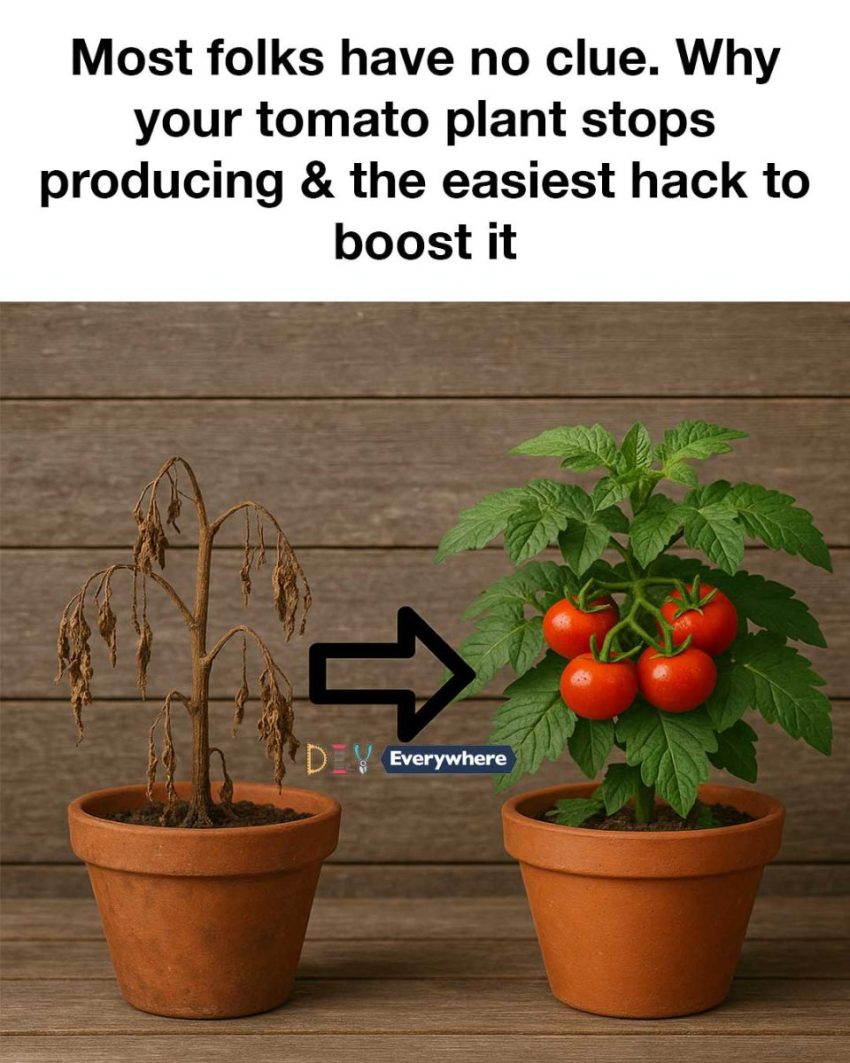ADVERTISEMENT
1. Understanding Tomato Plant Growth Cycles
Tomato plants have a distinct growth cycle that includes germination, vegetative growth, flowering, fruiting, and eventually, senescence. Each stage requires specific conditions to ensure healthy development. For instance, during the vegetative stage, which lasts about 4-6 weeks, the plant focuses on developing strong roots and foliage.
As the plant transitions to the flowering stage, which typically occurs 6-8 weeks after planting, it requires more phosphorus to support flower development. Understanding these stages helps gardeners provide the right care at the right time, ensuring a continuous supply of tomatoes.
2. Common Reasons for Reduced Tomato Production
Several factors can contribute to a decline in tomato production. One common reason is inadequate pollination, which can occur if there are not enough pollinators like bees in the area. Another issue is environmental stress, such as extreme temperatures or inconsistent watering, which can cause flowers to drop before setting fruit.
Nutrient deficiencies, particularly in nitrogen, phosphorus, and potassium, can also lead to reduced yields. It’s essential to regularly test soil and amend it with the necessary nutrients to support healthy plant growth.
3. The Role of Temperature in Flowering and Fruiting
Tomato plants are sensitive to temperature, and both high and low extremes can affect their ability to flower and fruit. Optimal temperatures for tomato production are between 70°F and 85°F during the day and 55°F to 70°F at night. Temperatures above 90°F can cause flowers to drop, while temperatures below 55°F can inhibit fruit set.
To mitigate temperature-related issues, consider using shade cloths during heatwaves or row covers during cooler nights. These simple measures can help maintain a stable environment for your plants.
4. Importance of Proper Watering Techniques
Consistent watering is crucial for tomato plants, as both overwatering and underwatering can lead to problems. Tomato plants generally require about 1-2 inches of water per week, depending on weather conditions. It’s best to water deeply and infrequently to encourage deep root growth.
Mulching around the base of the plant can help retain soil moisture and reduce evaporation. Additionally, watering in the early morning allows the plant to absorb moisture before the heat of the day sets in, reducing the risk of fungal diseases.
5. Nutrient Deficiencies and Their Impact on Yield
Tomato plants require a balanced supply of nutrients to produce abundant fruit. Nitrogen is essential for leafy growth, while phosphorus supports root and flower development. Potassium is crucial for overall plant health and fruit quality.
A lack of any of these nutrients can lead to poor fruit production. For example, a nitrogen deficiency may result in yellowing leaves and stunted growth, while a lack of phosphorus can cause dark green leaves and delayed flowering. Regular soil testing and the use of balanced fertilizers can help prevent these issues.
6. How Pruning Affects Tomato Production
Pruning is an important practice for managing tomato plants, as it helps improve air circulation and sunlight penetration. Removing suckers, which are the small shoots that develop in the leaf axils, can direct the plant’s energy towards fruit production.
However, excessive pruning can reduce the plant’s ability to photosynthesize, leading to lower yields. It’s important to find a balance by removing only the necessary growth to maintain a healthy, productive plant.
7. The Influence of Pollination on Fruit Set
Pollination is essential for tomato plants to set fruit, and it often relies on wind or insects to transfer pollen from the male to the female parts of the flower. Inadequate pollination can result in fewer fruits or misshapen tomatoes.
To encourage pollination, consider planting flowers that attract bees and other pollinators near your tomato plants. Additionally, gently shaking the plants can help distribute pollen, especially in indoor or greenhouse environments where natural pollinators may be scarce.
8. Identifying and Managing Pests and Diseases
Pests and diseases can significantly impact tomato production. Common pests include aphids, tomato hornworms, and whiteflies, all of which can damage foliage and fruit. Diseases such as blight, wilt, and mosaic virus can also reduce yields.
Regularly inspecting plants for signs of pests or disease and using integrated pest management strategies can help control these issues. This might include introducing beneficial insects, using organic pesticides, or removing affected plant parts to prevent the spread of disease.
9. The Easiest Hack: Using Epsom Salt to Boost Production
Epsom salt, which is magnesium sulfate, can be a simple and effective way to boost tomato production. Magnesium is an essential nutrient that supports photosynthesis and helps plants absorb other nutrients.
To use Epsom salt, dissolve 1 tablespoon in a gallon of water and apply it to the base of the plant every two weeks. This can help improve fruit set and overall plant health, leading to a more abundant harvest.
10. Companion Planting for Improved Tomato Health
Companion planting involves growing certain plants together to enhance growth and deter pests. For tomatoes, good companions include basil, which can repel insects, and marigolds, which can deter nematodes.
By strategically planting companions, you can create a more balanced ecosystem in your garden, reducing the need for chemical interventions and promoting healthier tomato plants.
11. Tips for Extending the Growing Season
Extending the growing season can help maximize tomato production, especially in regions with shorter summers. Techniques such as using row covers, cold frames, or greenhouses can protect plants from early frosts and allow for earlier planting.
Additionally, selecting early-maturing tomato varieties can ensure a harvest before the onset of cold weather. By implementing these strategies, you can enjoy fresh tomatoes for a longer period each year.


